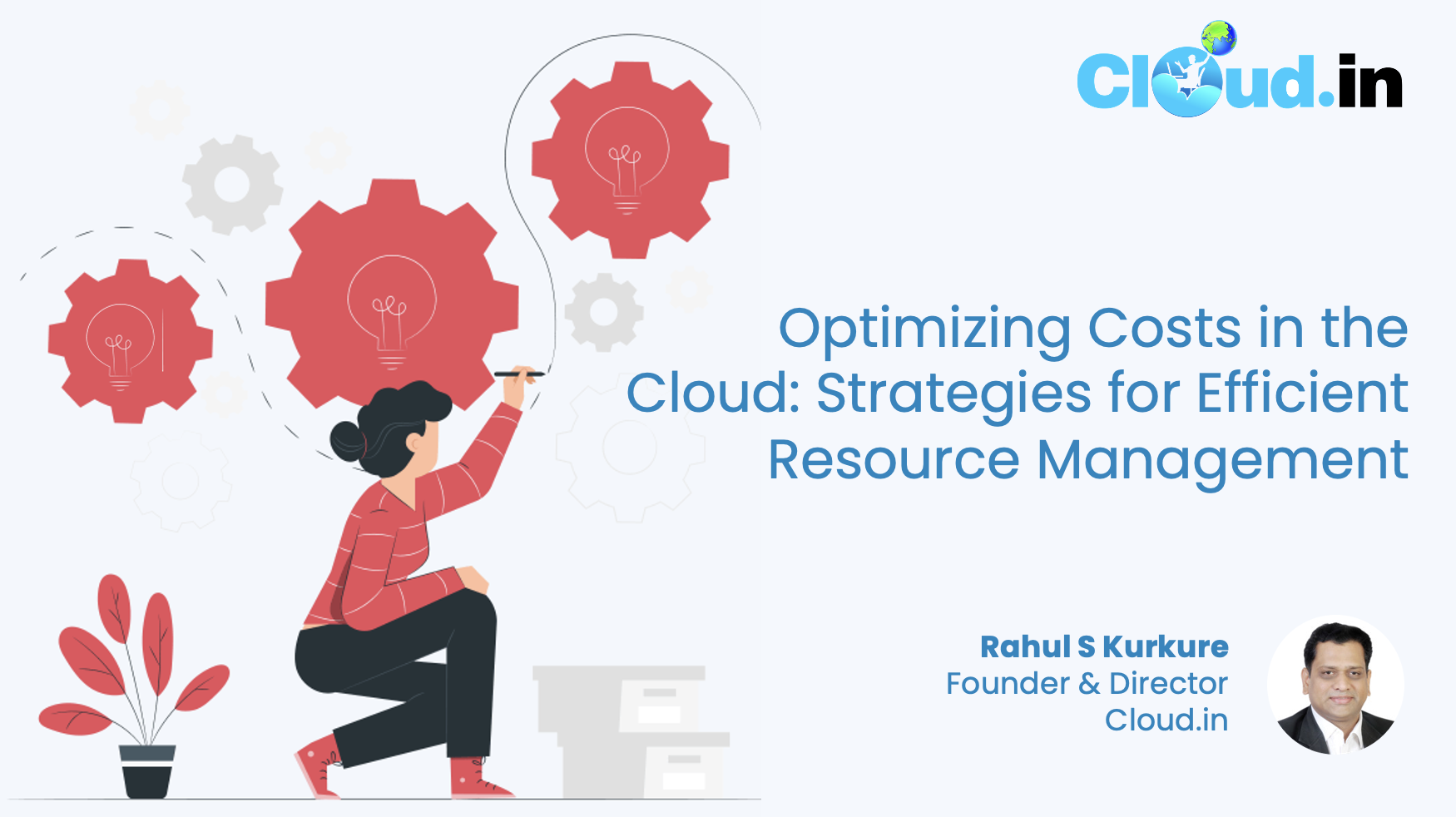Optimizing Costs in the Cloud: Strategies for Efficient Resource Management - Rahul S Kurkure, Founder and Director of Cloud.in

Businesses across various industry verticals are
increasingly adopting cloud computing for the many advantages it brings. Cloud technology facilitates user access from
any location and device, reducing the need for extensive hardware and software
investments. Key benefits include
enhanced reliability, rapid data processing speeds, scalability, flexibility,
virtually unlimited storage capacity, accelerated time to market, robust data
loss prevention measures, and more.
The shift to cloud infrastructure has carved the road for numerous business opportunities. According to Gartner, enterprise IT spending on public cloud computing is projected to surpass 51% by 2025. However, some surveys indicate that a significant 30% of cloud expenditure go waste, a concern for businesses. Interestingly, Flexera reported that in 2023, managing cloud spending surpassed security concerns as the top challenge for organizations. Businesses must address cloud cost management with seriousness, as the expenses associated with cloud services are increasing every day.
In this article, we will explore various strategies to effectively manage resources in the cloud.
Right size the cloud
infrastructure
Optimizing costs in the cloud involves a crucial element
known as rightsizing resources. This
process is essential for achieving cost efficiency by carefully evaluating
computing services and selecting the most suitable instance types and sizes
that align with specific workload requirements.
It comprises the strategic allocation of various components, including
databases, memory, and storage capacity.
A dynamic adjustment of storage resources allows for both expansion and
shrinkage, addressing the key challenge of avoiding over-provisioning that
leads to unnecessary costs and underutilization resulting in wasted expenses.
Monitoring and assessing resource utilization metrics, including CPU, storage, and memory regularly is imperative. This practice provides insights into instances that may be over or underutilized, enabling timely and appropriate actions to be taken. The significance of rightsizing instances lies in its potential to considerably reduce cloud costs. Tools such as AWS E2 Rightsizing Recommendations play a crucial role in ensuring organizations pay for precisely the resources they need, avoiding unnecessary expenditures.
Utilize reserved and
spot instances
Cloud providers persuade their customers with incentives
to pre-purchase and allocate computing power, commonly known as reserved
instances. Reserved instances offer
significant cost savings, particularly for organizations with consistent and
predictable workloads. By committing to
one or more years in advance, businesses can achieve cost reductions of up to
75% compared to on-demand pricing without compromising performance.
For organizations seeking cost efficiency, spot instances present another viable alternative. Although they come with a lower price tag, spot instances carry the risk of potential interruptions. They are best suited for non-critical workloads and applications, providing a cost-effective option for specific use cases.
Implement automated scaling
By predefining policies
and aligning them with actual demand, the autoscaling feature in cloud
computing empowers organizations to automatically adjust their cloud
resources. This capability allows for
the seamless scaling of instances up or down, responding to the dynamic
requirements of applications, thus optimizing both performance and
cost-effectiveness. Autoscaling serves
as a valuable tool in supporting applications to manage sudden spikes in
traffic or workloads without the need for manual intervention. Equally important, it scales down resources
during periods of lower demand, preventing unnecessary costs.
Consider the scenario of an online services organization facing server overloads during a surge in traffic. Without autoscaling, this situation could result in lower performance and dissatisfied users. Additionally, the organization might incur expenses for idle server capacity during low-traffic periods. Autoscaling addresses these challenges by dynamically creating additional servers during peak traffic, ensuring optimal performance, and scaling down during low-traffic periods to maintain cost efficiency consistently.
Monitor cloud cost and usage
Through continual monitoring and analysis of resource utilization patterns, organizations can pinpoint areas for optimization within their cloud infrastructure. Cloud monitoring tools such as AWS CloudWatch and third-party options like Cloud Spend and Cloud Zero, offer alert notifications for metrics like CPU and memory usage, bandwidth, and disk usage. These tools are instrumental in identifying idle compute resources and providing insights into overall resource utilization. Monitoring plays a crucial role in detecting anomalies and supporting organizations in making informed decisions about capacity planning and additional optimization efforts. Equally important is the need to monitor the introduction of any new cost-saving features offered by cloud providers. By keeping a vigilant eye on such developments, organizations can maximize the value of their investments in the cloud, ensuring they leverage the latest tools and features to enhance efficiency and cost-effectiveness.
Leverage cost management tools and services
Navigating the complexities of contemporary cloud environments and the numerous available services poses a significant challenge in calculating the specific services incurring costs. To gain insights into resource utilization and spending patterns, organizations can utilize relevant cost management tools and services provided by leading cloud providers such as AWS, Microsoft Azure, and Google Cloud Platform. With these tools, organizations can effortlessly monitor, predict, and even limit expenditures on cloud resources through effective cost optimization and management. By scrutinizing cost data, they can identify cost drivers, occurrences of overspending, and areas of underutilization, allowing for informed decision-making to optimize cloud computing resources. Cloud providers offer services like AWS Cost Explorer, Azure Cost Management, and Google Cost Management, providing organizations with visibility into cost allocation. In areas where improvement is possible, organizations can implement targeted strategies for cost optimization, ensuring they extract maximum value from their cloud investments while maintaining financial prudence.
Organizations can
enhance the return on their cloud infrastructure investments and sustain
optimal performance by implementing the above cost optimization
strategies. Moreover, effective cloud
cost optimization not only aligns with financial goals but also contributes to
achieving broader business objectives.
It enables organizations to plan for the future, limiting resource
wastage and promoting financial sustainability.



